| By: Paul S. Cilwa | Viewed: 4/19/2024 Occurred: 12/9/1999 |
Page Views: 1257 | |
| Topics: #Places #Rome #Italy | |||
| Paul and Michael's visit to Rome, 1999 | |||
The Glory That Was Rome
December 9, 1999
The rain had returned by the time we disembarked the train in Rome. We were met at the station by a stranger who asked if we had a place to stay. I tried to brush him off but Michael, ever the nice guy, wanted to hear what the man had to say. "I represent a hotel in the neighborhood," he explained. "It is a very nice hotel, and I can get it for you cheap!"
This sounded like a con game to me, but he did have an expensive brochure for the place—which was called, "Hotel California", believe it or not—and he was wearing what looked like an official badge identifying him as something. I also noticed other people working the train station with similar badges. So, the next thing I knew, we were following our new friend into the wilds of Rome in search of the Hotel California.
I resolved to not go farther than the two blocks he had promised, and to bail if the neighborhood started looking too seedy. But, there it was: just two blocks from the train station, in an old building with a newly-refurbished facade, the Hotel California.
I had another scare when we actually were escorted to our room: Although the lobby had been renovated, the hallway hadn't been altered since Nero's last visit. The elevator still had Otis' initials on it, a clunky thing with a cage we had to open and close ourselves. But the room, itself, was very nice. Its biggest problem, in fact, was one we were to encounter all through Europe: The shower stall was definitely too small for a generous-sized American male.
The next day, we started our touring—using the Metro, as usual—with the Coliseum.
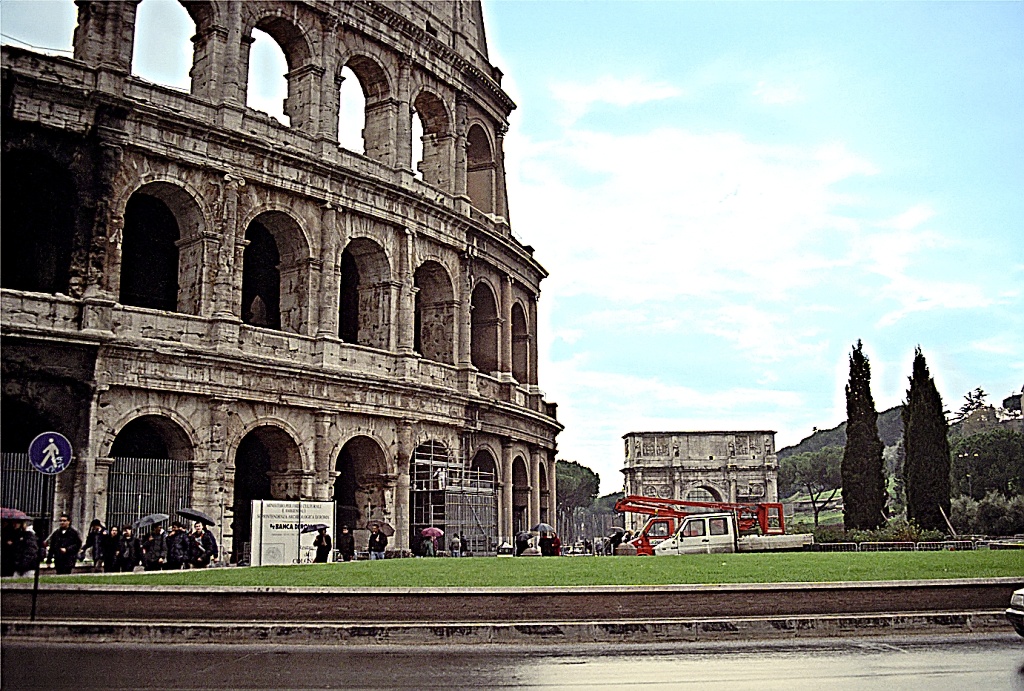
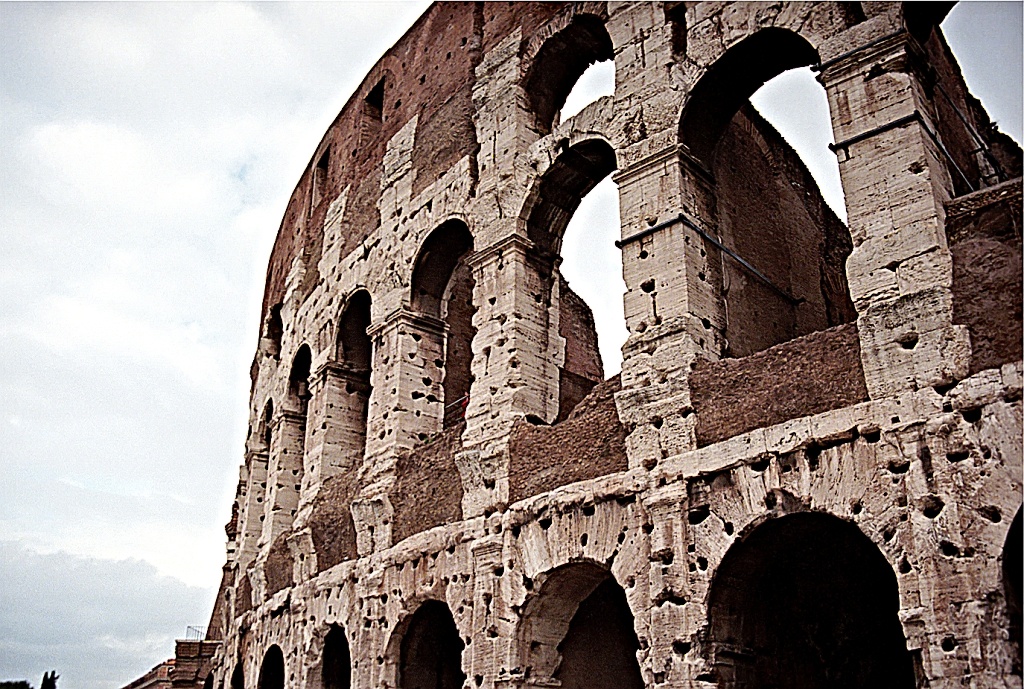
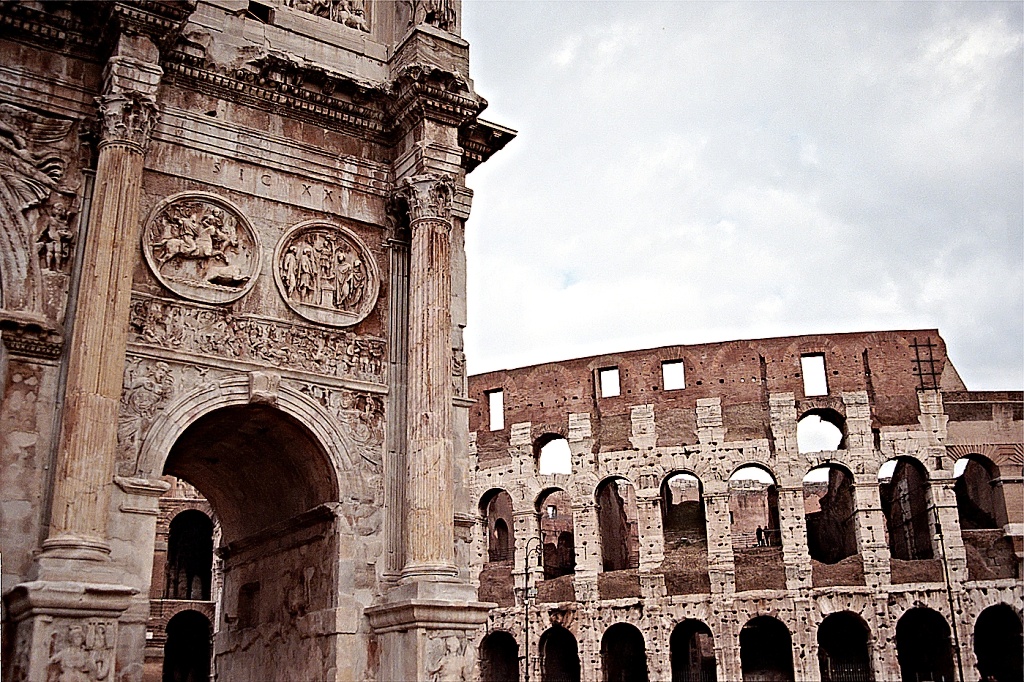
A block or so from the Coliseum was Palatine Hill. This is the start of an archaeological park that runs through Rome. It is one of Rome's famous Seven Hills, and 2,300 years ago was the place to live. Then most of the homes were demolished to make way for temples to some of the gods.
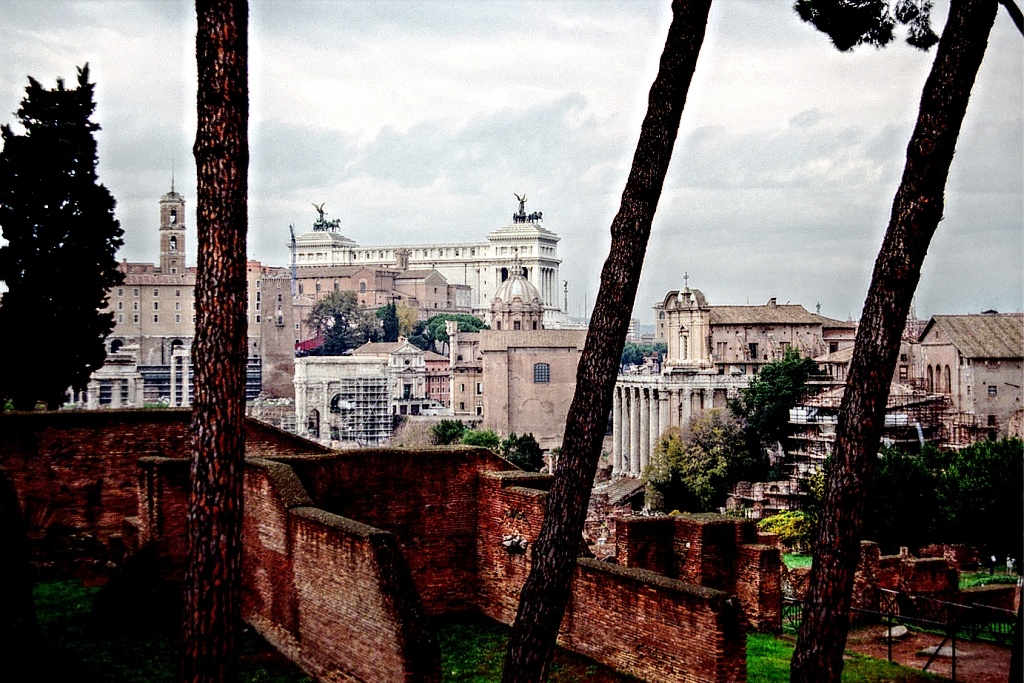
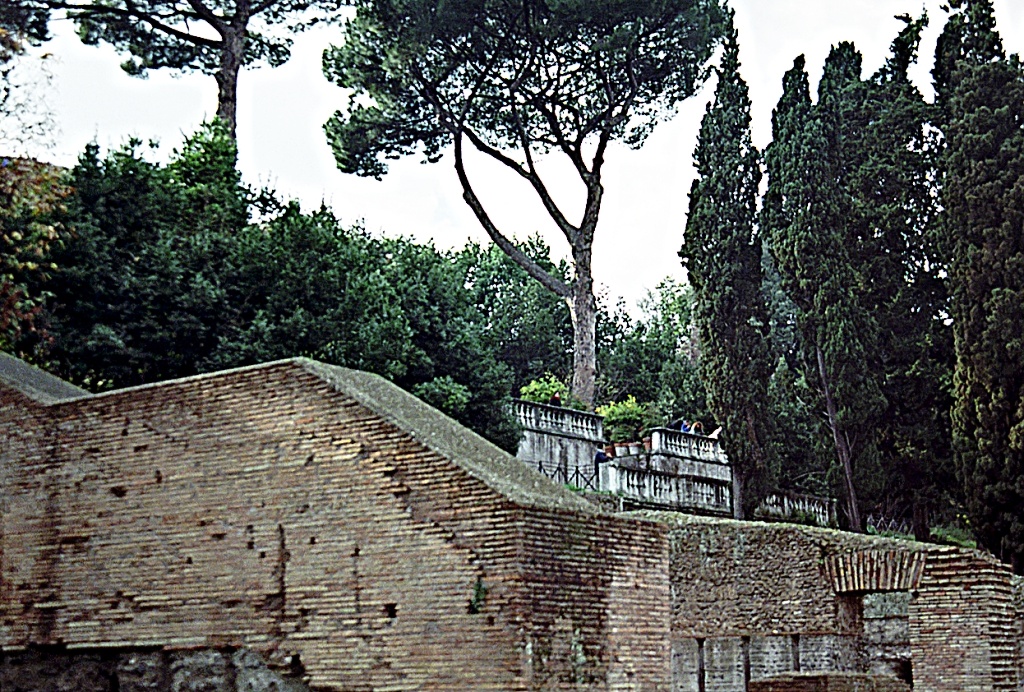
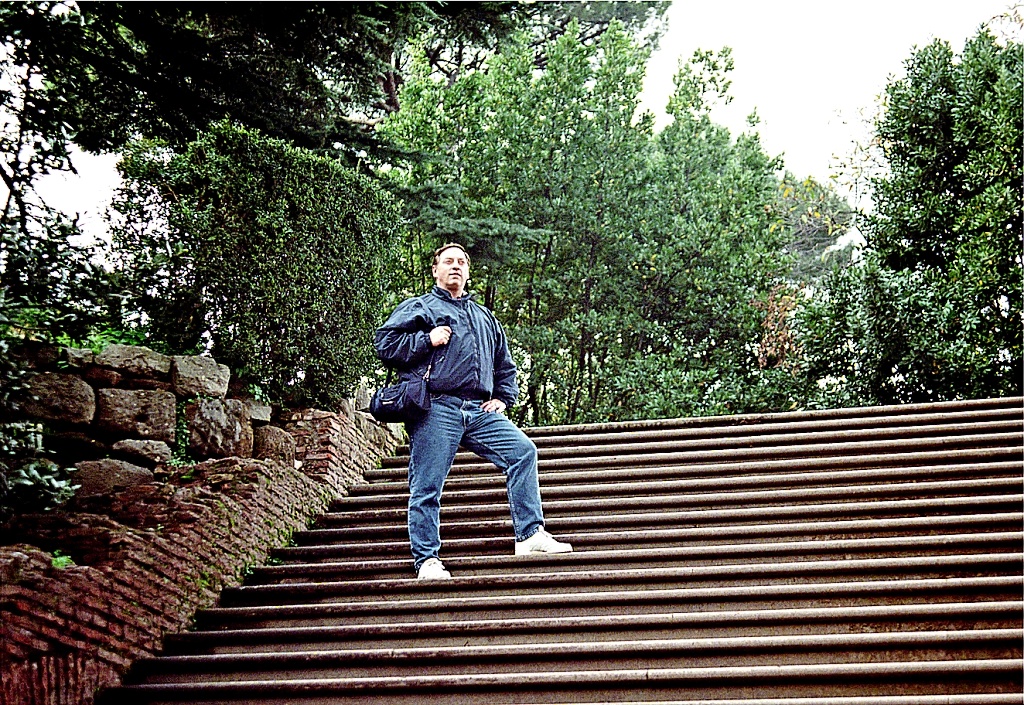
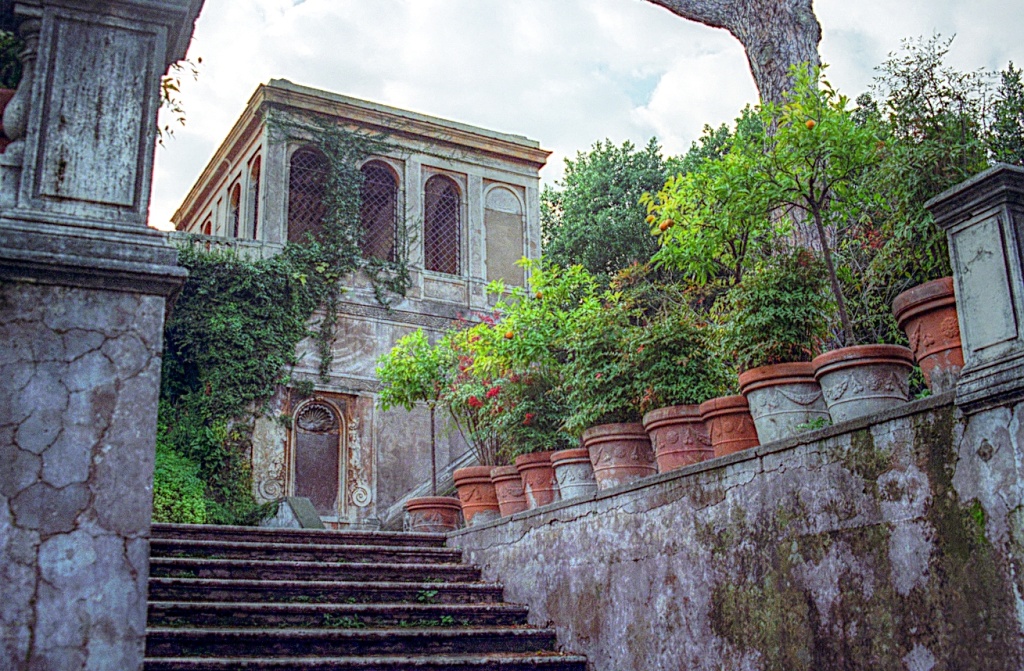
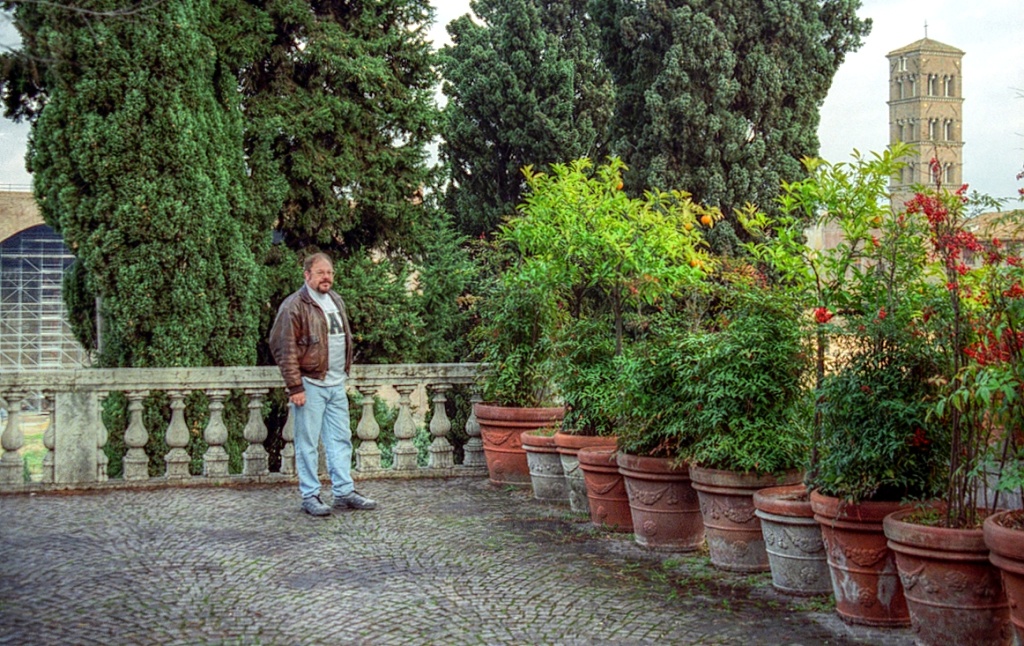
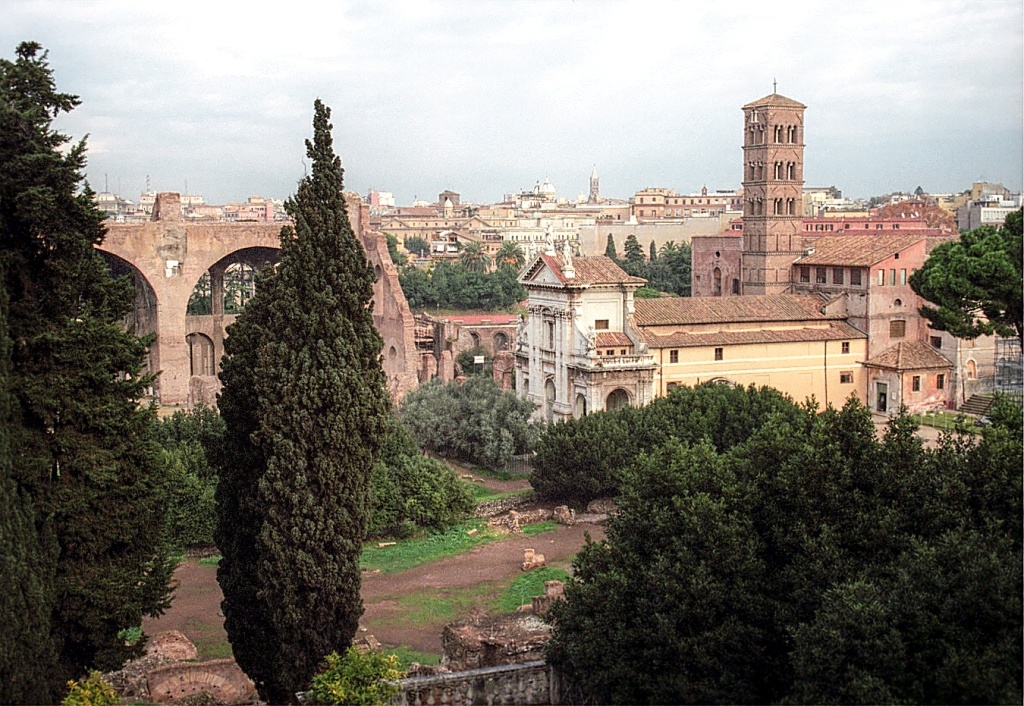
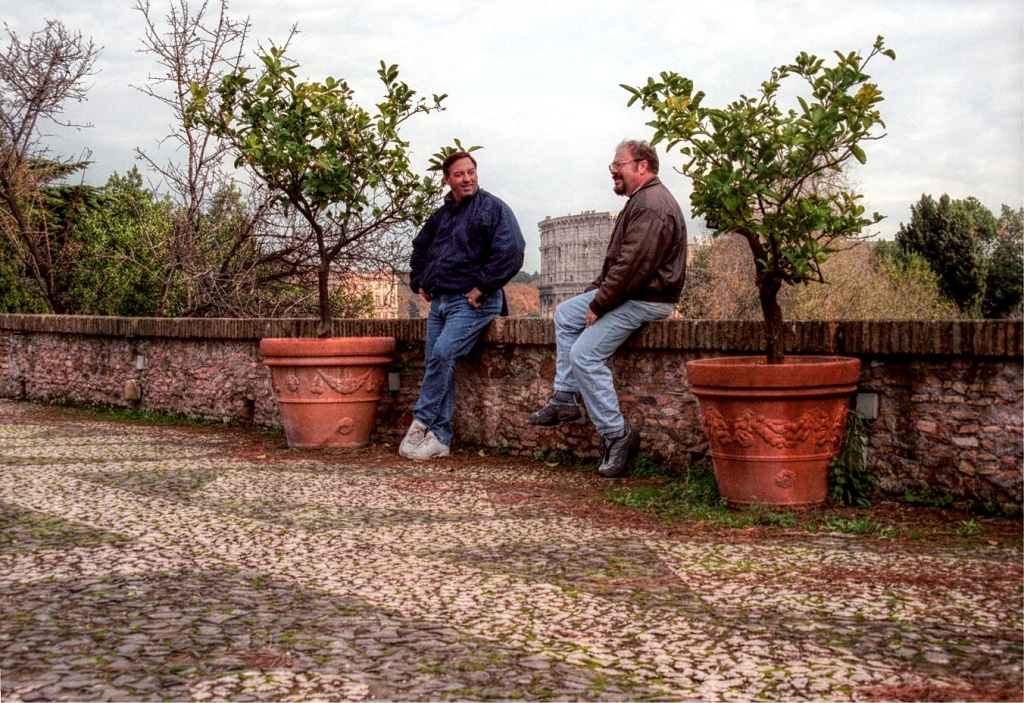
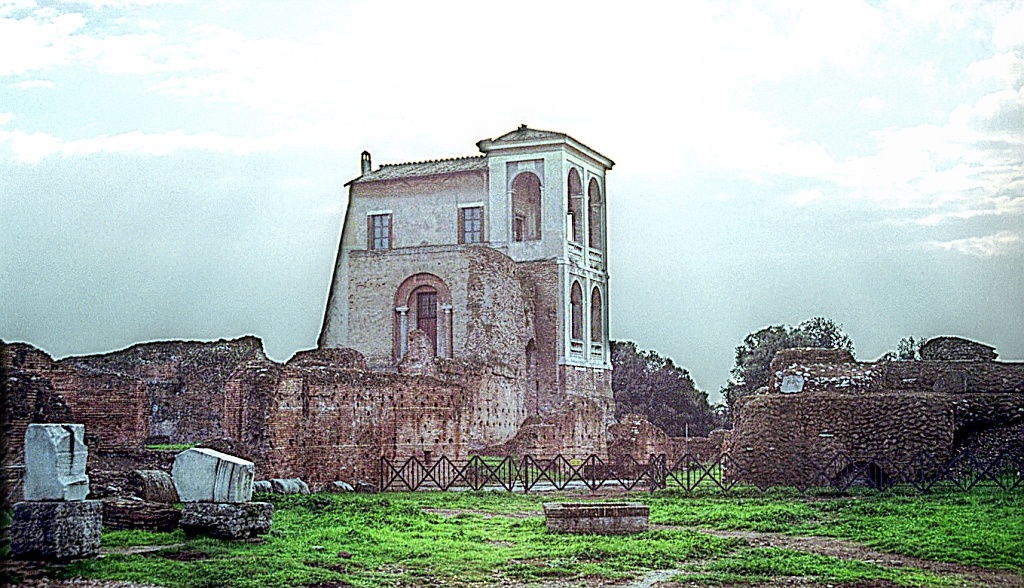
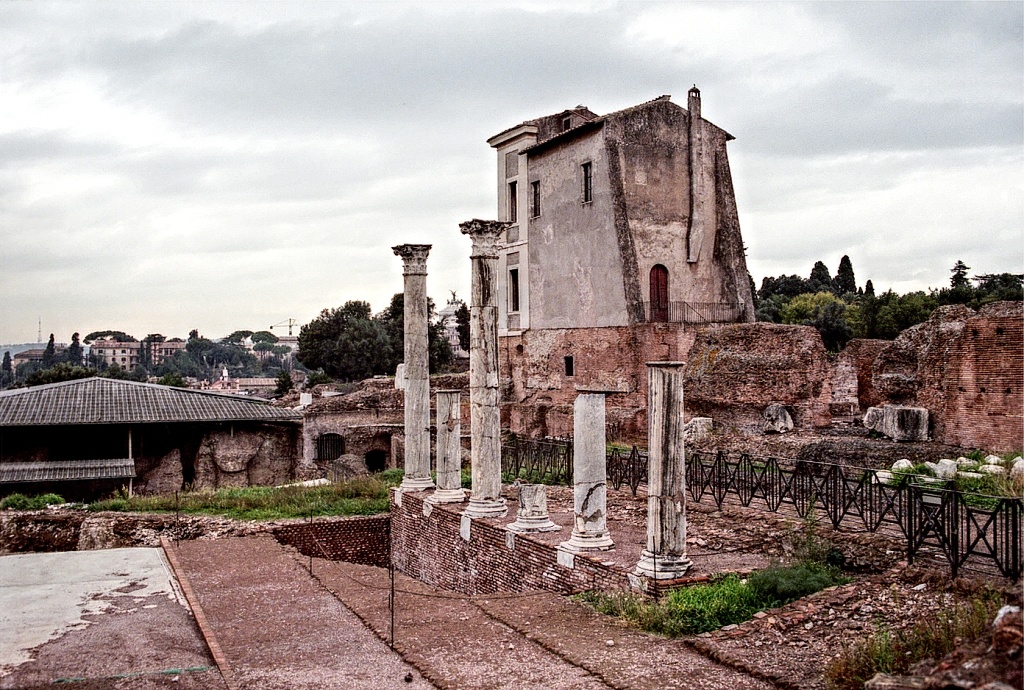
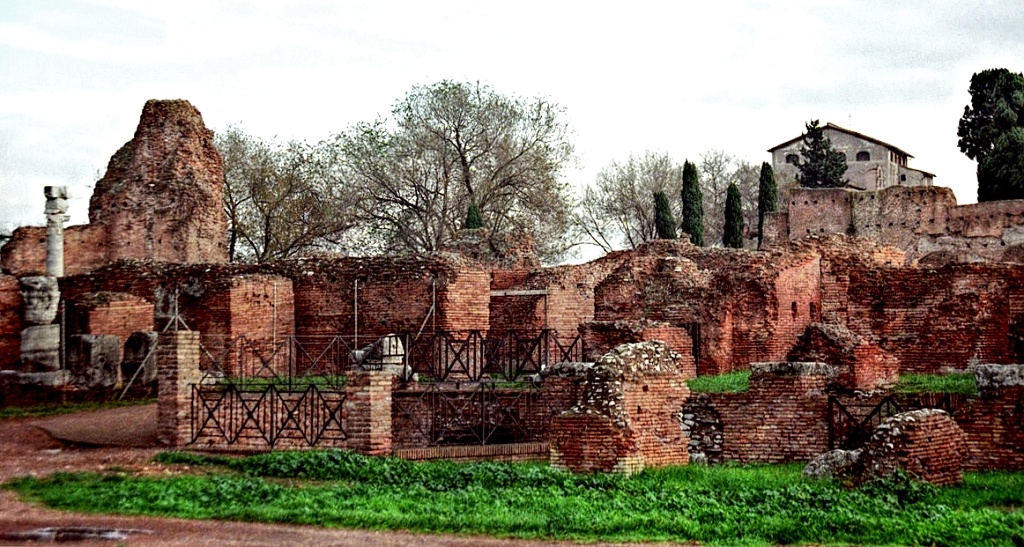
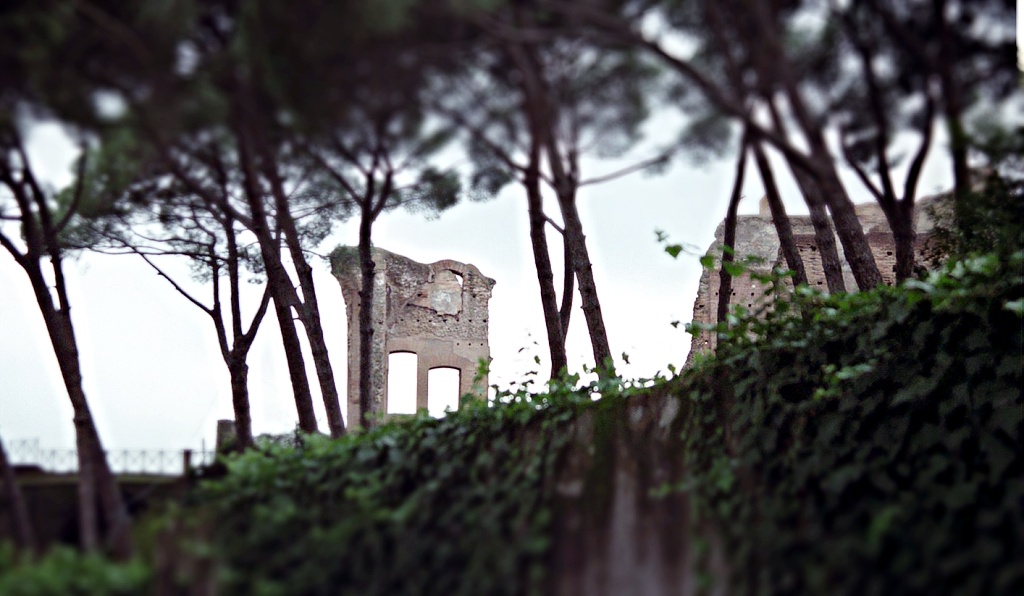
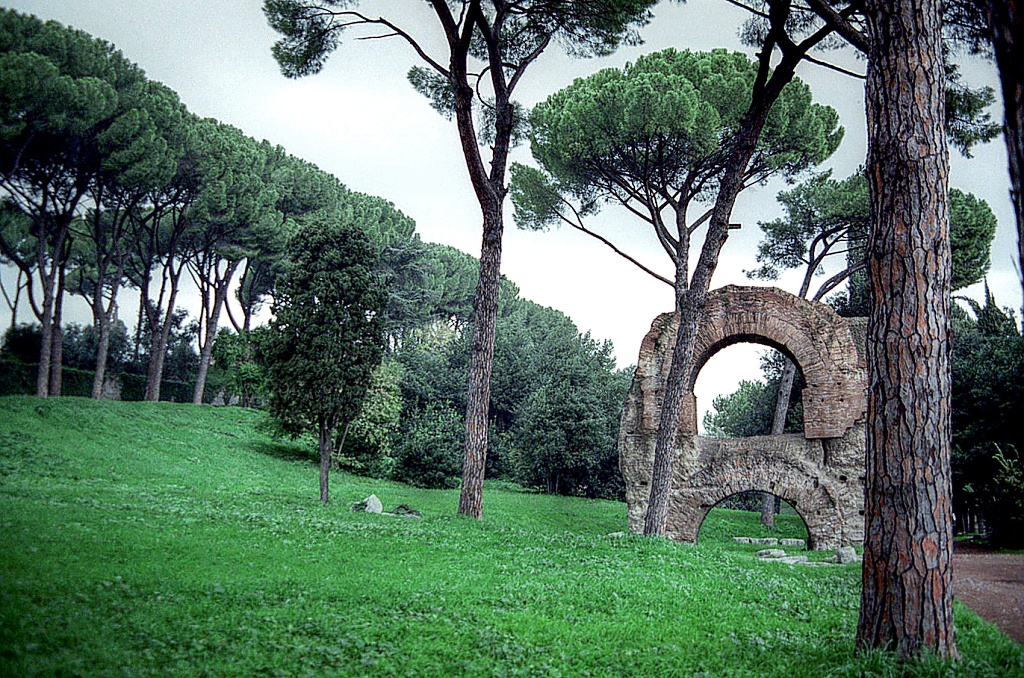

After a thorough tour of Palatine Hill, including a look at the still-in-progress archaeological dig that is revealing more and more of the hill (which was essentially hollowed-out by Nero), we strolled toward the Circus Maximus, giving us a look at Rome's traffic…which, in turn, made us happy we were walking!
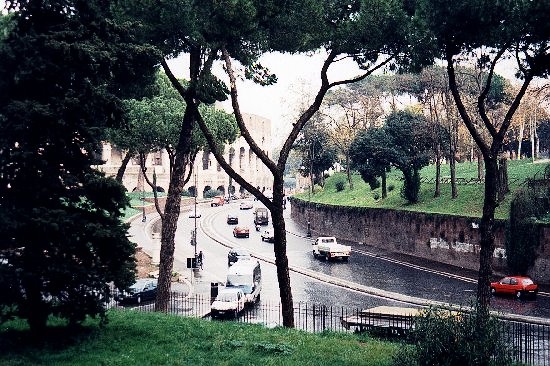
We then walked back to the archaeological park, where the Roman Forum is being restored.
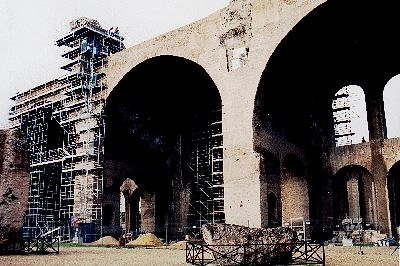
As it happens, Rome has had many forums. Two thousand years ago, a forum was just a place for people to gather, which they did for a variety of reasons—yes, to speak on political issues, but also to entertain and to sell. So, basically, a forum was then what a cable channel is now. And, like cable channels, a new forum would appear, attract a lot of attention, then find its popularity waning when a newer, sexier, forum was established.

In the vicinity of a popular forum, temples and other public buildings would spring up. In the Roman Forum archaeological park, are the remains of many of these.
Wherever there were temples to the Roman gods, the Church later gutted them and remade them into churches devoted to some saint or other. In many cases, the Church's "improvements" have since also faded, leaving nothing but the shell of the original building.
Still present, and even readable, is the original "sign" for the Senate building. The building is also present; it, too, was made into a church, but is now being restored.

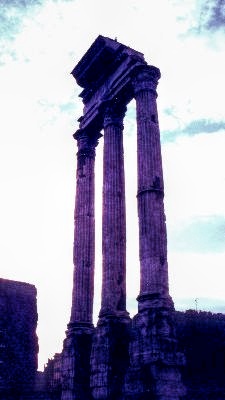
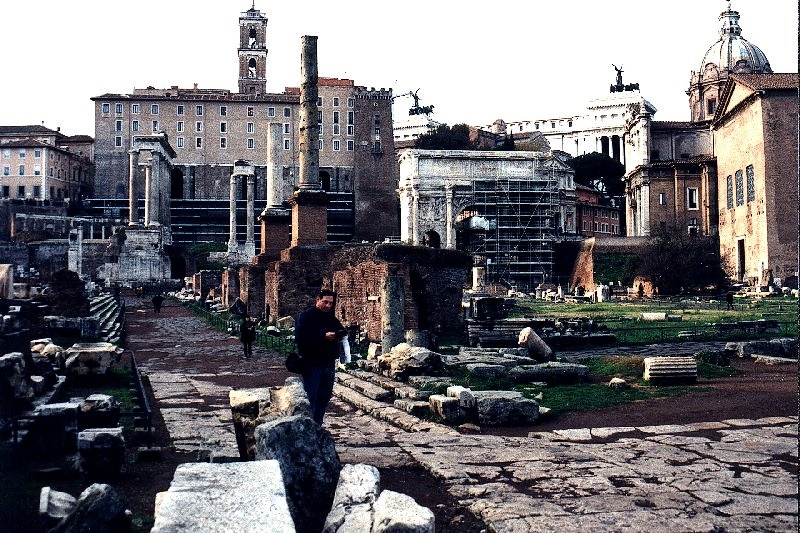
Some of the remains are spectacular. This place must have been just incredible to see, in its day. And, we may be able, someday, to see what the ancient Romans saw: The Pope has declared the year 2000 to be a "Jubilee" year, a custom that comes to us from the Hebrews. In a Jubilee Year, people are supposed to rebuild and renovate; and Rome is, indeed, engaged in a massive restoration program aimed at being to light as many of the old ruins as possible.
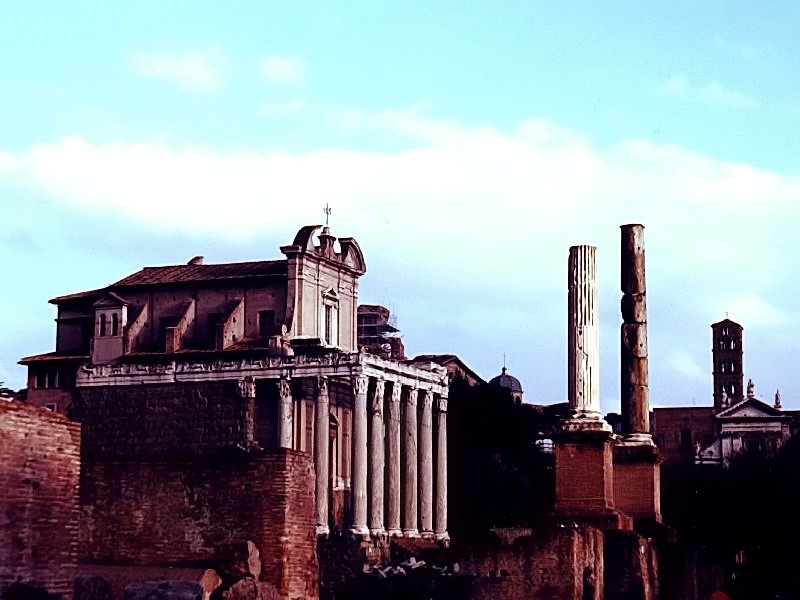
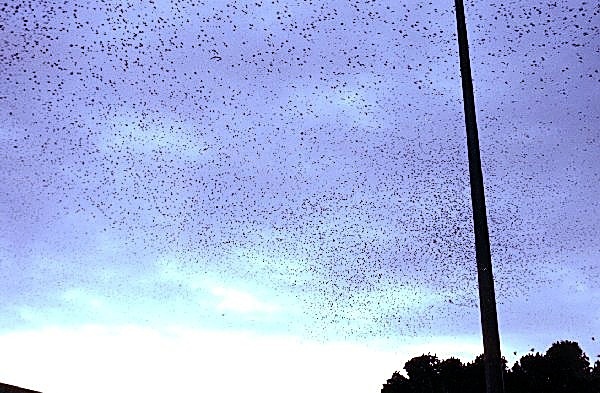
On the way back to the Hotel California, we had our attention caught by a sight straight from Hitchcock: A flock of birds, surely numbering in the hundreds of thousands, swarming to roost in a few trees just back of the train station. No one else seemed to pay them any heed, but they darkened the sky and their cries were nearly deafening.
Pantheon
December 10, 1999
The next day we had a few hours before our scheduled train to Brindisi, from where we would catch the ferry to Greece. So we walked in the other direction from our hotel, toward St. Peter's and the Pantheon.
The Pantheon, of course, was built by the Romans to honor all the gods…including any they might have inadvertently missed. It has since been made into a church, of course; but in these ecumenical times people go to see it as the pantheon it was. It is still decked out as a church, but we all know its true purpose.
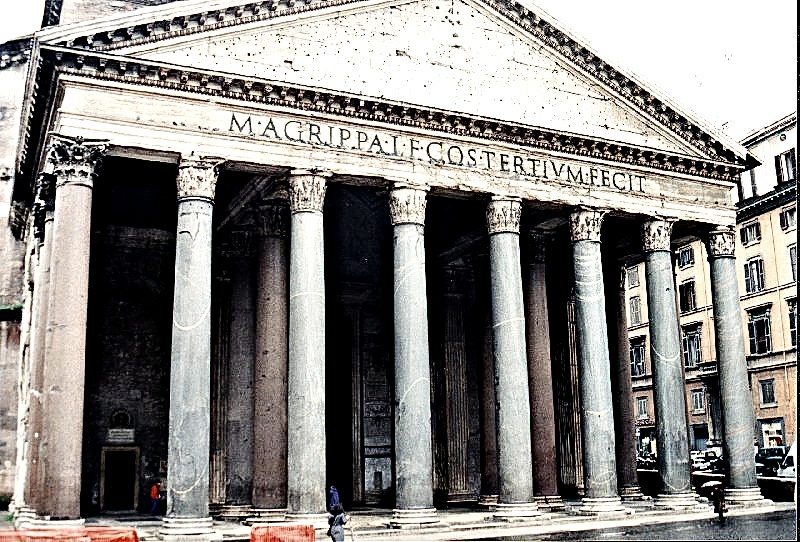
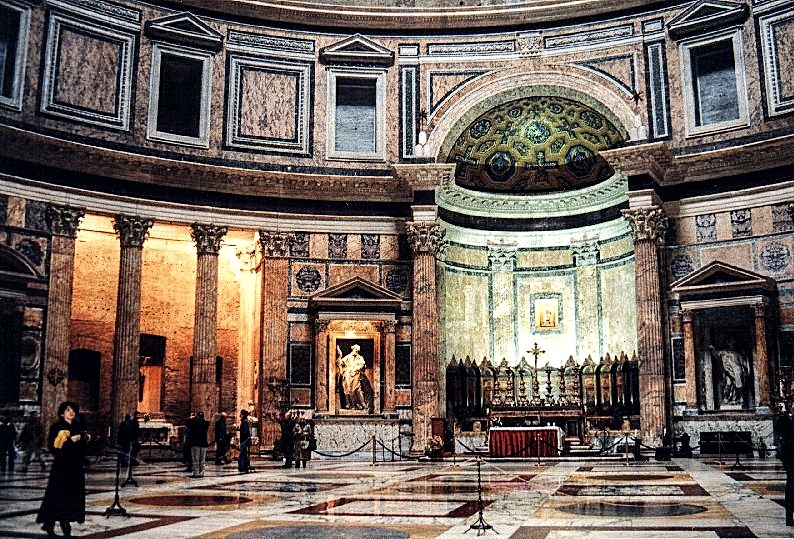
The dome has a hole in it to let in the natural light. It was raining the day we visited, so the center of the interior was roped off—the marble floor was wet and slippery.
Yes, the ancient Romans could do beautiful domes, but they weren't quite up to floor drains.
The architecture of the Pantheon is so stunning, that Michelangelo made the trip from Florence just to study it. He then copied its dome when he designed the Sistine Chapel.
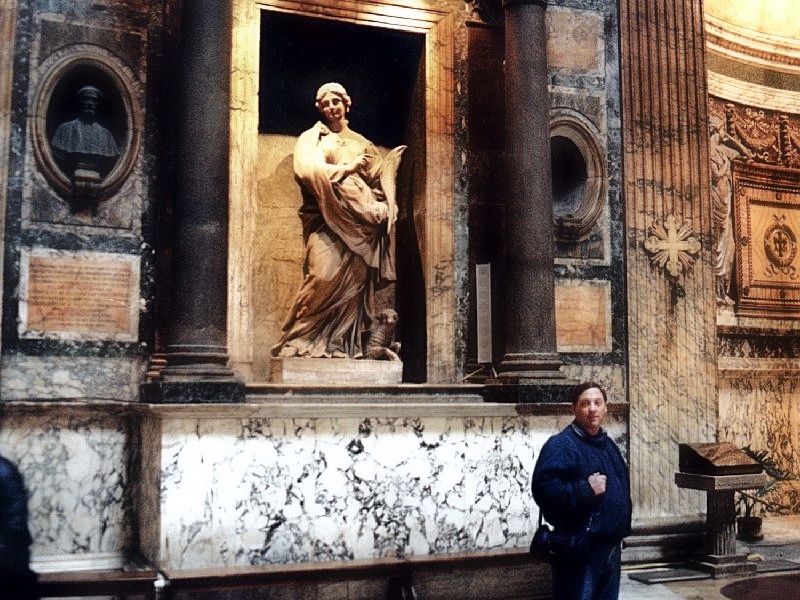
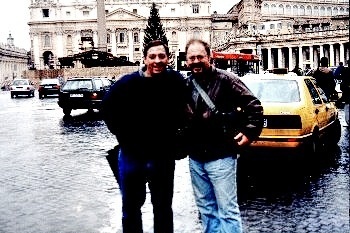
We took a bus from the Pantheon to the vicinity of St. Peter's. On the way, we got to talking to a commuter who warned us of "gypsy children". This was the third warning we had received, about these kids who wander the streets of Rome, picking the pockets of the unwary. As it happened, there was a band of these children on our bus. Spotting them, our friend pointed and said, loudly, "I see you! I know what you're doing!" (Or something like that; he was speaking Italian.) The other passengers took up the refrain. What was interesting to me, was, this wasn't done in anger or shame. It was more like grinning at a baby and saying, "I know what you just did in your diaper!" It was all good-natured; the kids were giggling, and got off at the next stop.
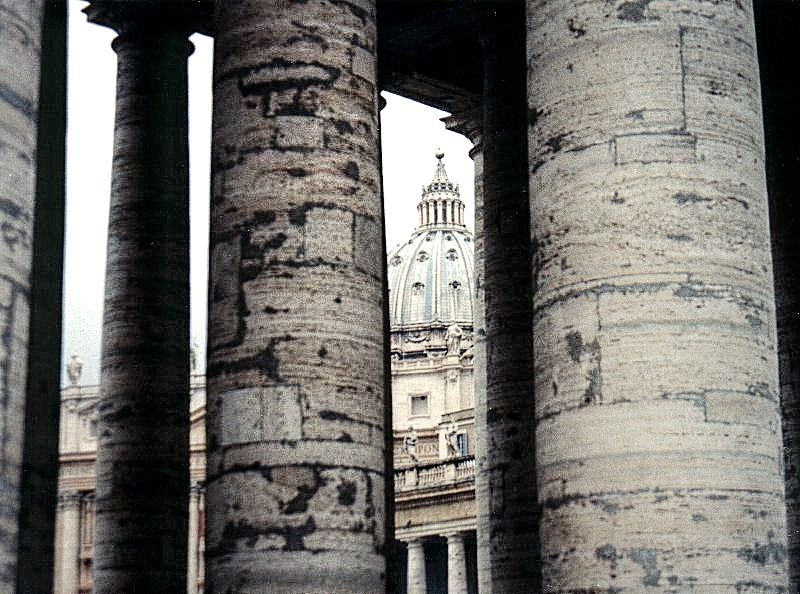
Someone who wasn't giggling, was the girl who took our picture. She and her friend were visiting from Ohio, and her purse had been emptied of her wallet the day before. Fortunately, it hadn't contained much money or her passport; but she had to go through the hassle of canceling her credit cards and it was not a pleasant memory for her.
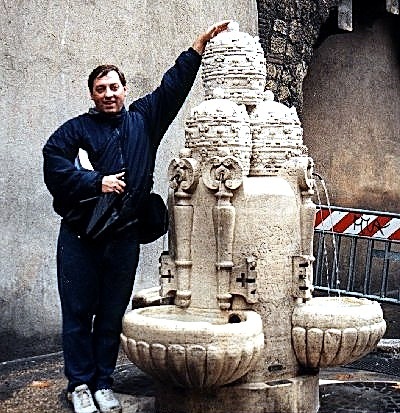
We considered visiting the famous Trevi Fountain (where you're supposed to drop a coin, like the three women did in Three Coins in the Fountain), but, as part of the Jubilee Year, the Trevi Fountain is also undergoing a complete restoration and it is currently completely hidden under plywood and canvas. So, we settled for a quick visit to the Spanish Steps before catching our train.
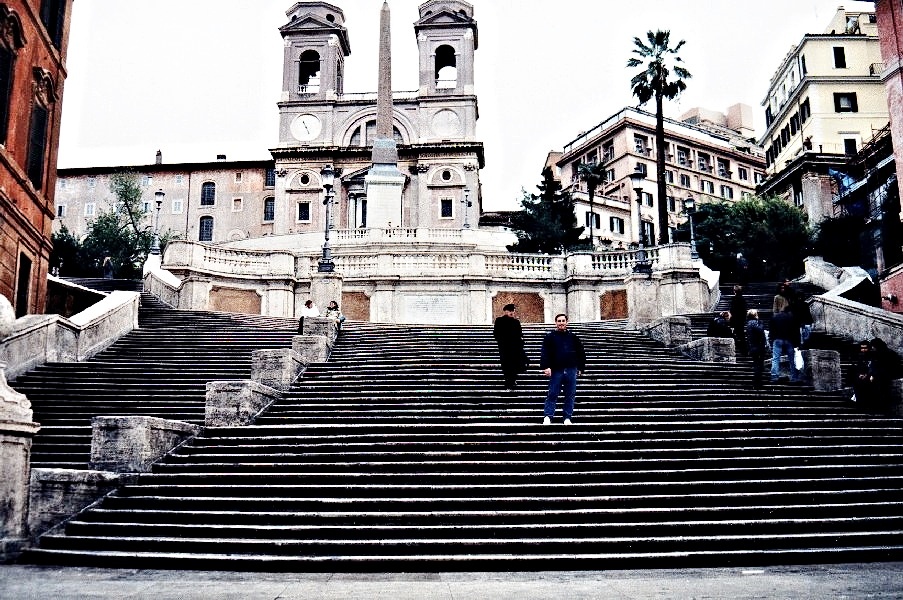
The Spanish Steps were designed by some famous Spanish guy that Michael went on and on about; however we now can't remember who it was. Anyway, they are an impressive set of steps—especially if you need to climb them for some reason—but no substitute for an escalator, in my opinion.
Now, ironically enough, we soon would have to climb an even higher set of stairs, in Greece…but that's another story, which will be told in the next section.





